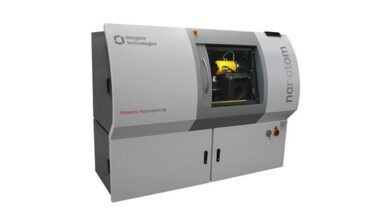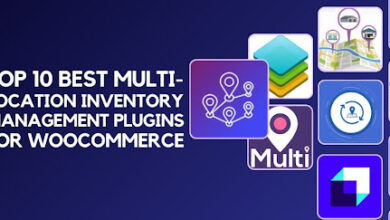Can Technology Reduce Burnout for Healthcare Professionals?

Healthcare professionals are drowning in administrative tasks while patient care suffers. The constant pressure of documentation, endless alerts, and fragmented systems creates a perfect storm of exhaustion. What if technology could help instead of hurt? Smart digital solutions are finally addressing the root causes of burnout in healthcare, offering real relief to overwhelmed providers.
From AI-powered documentation to intelligent workflow systems, innovative tools are transforming how healthcare professionals experience their daily work environment.
The Growing Crisis of Healthcare Professional Burnout
Healthcare workers face unprecedented challenges that extend far beyond patient care. The administrative burden continues to crush even the most dedicated professionals, creating a cycle of frustration and exhaustion.
Understanding the Scale of the Problem
Burnout in healthcare has reached crisis levels, with systemic issues plaguing every corner of the industry. Even if organizations could fill open administrative roles, high attrition rates – 28 percent – and high costs associated with recruiting and training staff mean that simply hiring more people won’t resolve the underlying issues. This creates a vicious cycle where remaining staff shoulder increased workloads.
The emotional toll on healthcare workers manifests in multiple ways. Providers report feeling disconnected from their original purpose while drowning in paperwork. Many experienced professionals consider leaving the field entirely, further straining an already fragile system.
Technology’s Role in Current Burnout Patterns
Technology in healthcare often contributes to provider stress through poorly designed interfaces and fragmented systems. Electronic health records that should streamline care instead create documentation burdens that extend work hours into personal time.
By leveraging a practice management solution that brings together scheduling, billing, and patient communication into one integrated platform, healthcare organizations enable providers to dedicate more time to direct patient care. These comprehensive solutions help reduce the cognitive load created by juggling multiple disjointed systems while also automating many routine administrative tasks.
How Technology Addresses Core Burnout Drivers
Modern healthcare technology is evolving to tackle the specific pain points that fuel professional exhaustion. Smart systems now anticipate provider needs rather than creating additional obstacles.
Streamlining Administrative Workflows
AI-powered documentation tools are revolutionizing how providers handle clinical notes and patient records. These systems capture conversations naturally, automatically generating structured notes that meet regulatory requirements without extensive manual input.
Voice recognition technology has matured significantly, allowing providers to dictate notes efficiently while maintaining accuracy. Smart templates learn from provider preferences, suggesting relevant content based on patient conditions and treatment patterns.
Reducing Decision Fatigue Through Intelligent Systems
Clinical decision support systems filter information more effectively, presenting only relevant alerts and recommendations. Machine learning algorithms analyze patient data to highlight critical insights while suppressing routine notifications that contribute to alert fatigue.
These systems learn from provider responses, continuously refining their recommendations to match individual practice patterns. The result is more targeted support that enhances rather than interrupts clinical decision-making.
Revolutionary Digital Solutions Transforming Healthcare
Innovative technologies are reshaping how healthcare professionals interact with their work environment. These solutions focus on reducing burnout with technology through thoughtful automation and user-centered design.
AI-Powered Clinical Support Tools
Ambient intelligence systems monitor clinical conversations, extracting relevant information for documentation without requiring direct provider interaction. These tools work in the background, capturing essential details while providers focus entirely on patient interaction.
Predictive analytics help providers anticipate patient needs, enabling proactive care that prevents complications. This shift from reactive to preventive care reduces emergencies that contribute to provider stress and healthcare professional well-being concerns.
Comprehensive Wellness Monitoring Systems
Wearable technology now monitors provider stress levels in real-time, offering immediate feedback about workload impacts. These devices track heart rate variability, sleep patterns, and activity levels to identify burnout risk factors before they become critical.
Research shows that 63% of physicians reported at least one manifestation of burnout in 2021, highlighting the urgent need for proactive wellness interventions. Digital wellness platforms provide personalized recommendations based on individual stress patterns and work schedules.
Virtual reality applications offer immersive relaxation experiences tailored to healthcare environments. These tools provide quick stress relief sessions that fit into busy schedules, helping providers reset between challenging patient encounters.
Specialized Solutions for Different Healthcare Roles
Mental health solutions for nurses include mobile apps that provide peer support networks and stress management resources. These platforms connect nurses facing similar challenges while offering evidence-based coping strategies.
Pharmacist-focused tools automate medication verification and drug interaction checks, reducing the cognitive burden of complex pharmaceutical decisions. Laboratory technicians benefit from automated result reporting systems that minimize manual data entry errors.
Implementing Technology for Sustainable Well-Being
Successful technology adoption requires careful planning and ongoing support to ensure positive outcomes for healthcare professionals. Organizations must balance innovation with usability to avoid creating additional stress.
Change Management Strategies
Healthcare organizations need phased implementation approaches that allow providers to adapt gradually to new systems. Training programs should focus on practical benefits rather than technical features, demonstrating how tools directly improve daily workflows.
Peer champions can accelerate adoption by sharing success stories and providing informal support during transition periods. These advocates help identify workflow issues early, allowing for rapid adjustments that prevent implementation failures.
Measuring Success and ROI
Burnout reduction metrics should include both quantitative measures, like documentation time, and qualitative feedback about job satisfaction. Organizations must track multiple indicators to understand technology’s comprehensive impact on provider well-being.
Cost-benefit analyses should account for reduced turnover, improved patient satisfaction, and decreased liability risks associated with provider burnout. These broader benefits often justify technology investments beyond simple productivity gains.
Moving Forward with Technology-Enabled Well-Being
Healthcare technology is finally maturing to support provider well-being rather than hindering it. Smart systems that learn from user behavior, automate routine tasks, and provide meaningful clinical support are becoming standard rather than experimental.
The key lies in selecting solutions that prioritize human needs over technical capabilities. When technology serves providers instead of overwhelming them, everyone benefits. Professionals rediscover their passion for patient care while organizations see improved retention and satisfaction. The future of healthcare depends on getting this balance right.
Common Questions About Technology and Healthcare Burnout
Can AI reduce burnout?
AI has emerged as a game-changer in combating burnout. With its ability to analyze vast amounts of data, automate repetitive tasks, and enhance decision-making processes, AI offers invaluable support to individuals and organizations in addressing professional exhaustion.
What technology can clients use to improve their healthcare outcomes?
Digital health encompasses mobile health, health information technology, wearable devices, telehealth and telemedicine, and personalized medicine. These technologies have begun to improve care delivery without the traditional constraints of distance, location, and time.
How quickly do providers see burnout reduction benefits from new technology?
Most providers notice initial workflow improvements within 2-4 weeks of implementation, with significant burnout reduction typically occurring after 3-6 months of consistent system use and optimization.



